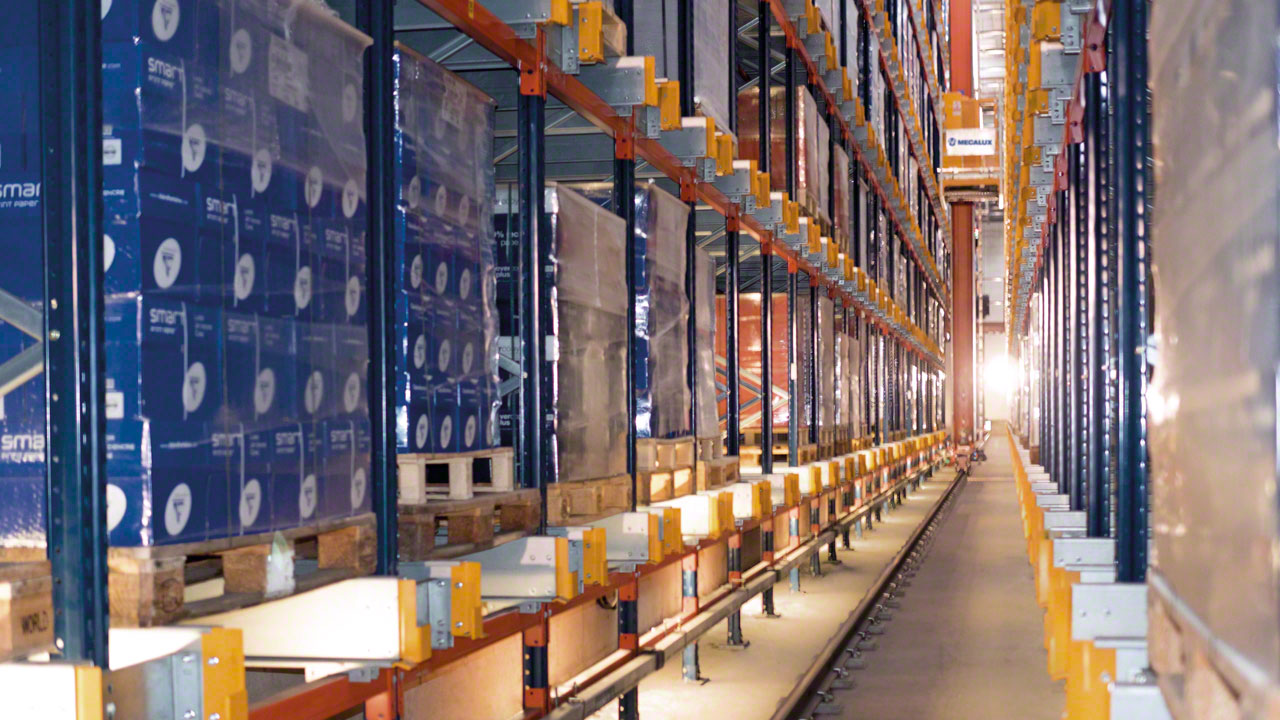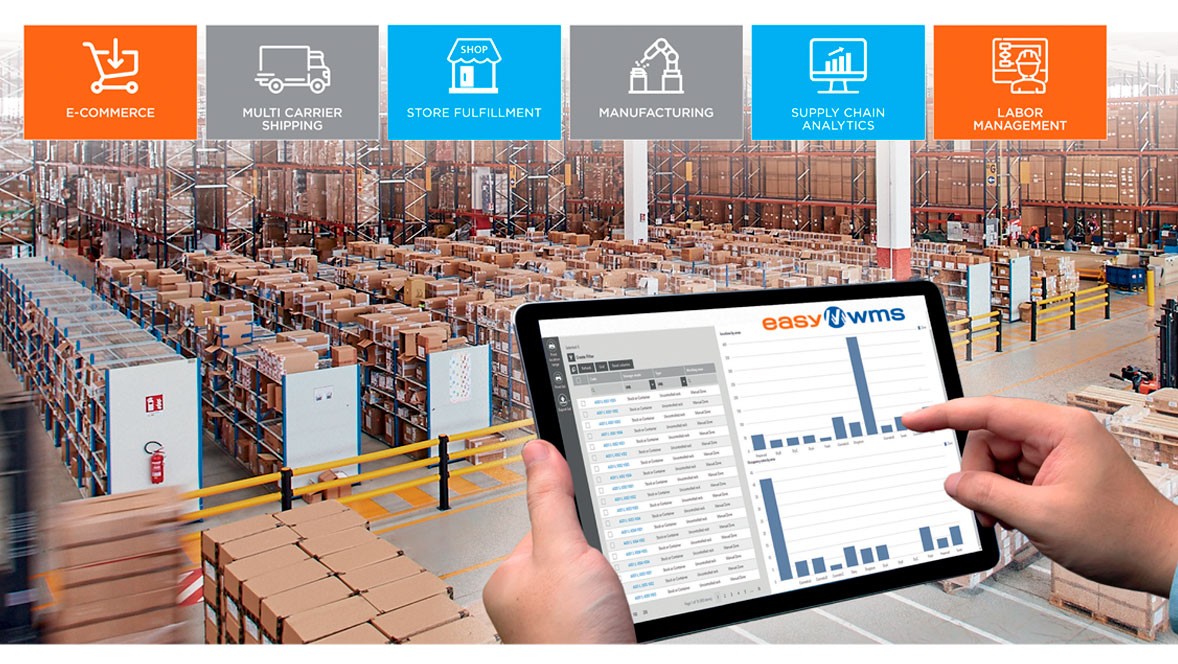- +234 8022215962
- 17, Igbasan Street, Off Church Street, Opebi, Ikeja Lagos
What is a Warehouse Management System?
A warehouse management system (WMS) is a software application that helps manage and control warehouse operations. It encompasses various functions, including inventory management, order fulfillment, labor management, and integration with other systems. The primary goal of a WMS is to ensure that warehouse operations are carried out as efficiently and accurately as possible.
Key Features of Warehouse Management System
Inventory Management
- Real-Time Tracking: A WMS provides continuous updates on inventory levels, locations, and statuses. This feature allows warehouse managers to monitor stock movements and availability instantly, ensuring accurate stock counts and minimizing discrepancies.
- Barcode Scanning and RFID: These technologies automate data capture processes, enhancing the accuracy of inventory tracking and reducing manual errors. Workers use handheld scanners to read barcodes or RFID tags, streamlining the processes of receiving, putaway, picking, and shipping.
Order Fulfillment
- Picking and Packing: Advanced picking strategies, such as zone, wave, and batch picking, optimize the order fulfillment process. The system guides workers through the most efficient pick paths, minimizing travel time and increasing productivity.
- Shipping and Receiving: WMS automates shipping and receiving tasks, including generating shipping labels, creating bills of lading, and scheduling dock appointments. Automation reduces manual workload and errors, speeds up processes, and ensures accurate documentation and tracking.
Labor Management
Performance Metrics: WMS tracks key performance indicators (KPIs) like order pick rates, labor utilization, and task completion times. By monitoring these metrics, managers can identify bottlenecks, allocate resources more effectively, and optimize workforce productivity.
Integration Capabilities
ERP and SCM Integration: WMS can integrate with Enterprise Resource Planning (ERP) and Supply Chain Management (SCM) systems, enabling seamless data exchange between different platforms. This integration provides a holistic view of the supply chain, improving coordination and planning.
Benefits of Warehouse Management System
Increased Efficiency
By automating routine tasks and optimizing workflows, a WMS significantly enhances operational efficiency. Automation of tasks such as data entry, inventory tracking, and order processing reduces the need for manual intervention, speeding up operations and minimizing errors. Optimized workflows ensure that processes are streamlined, allowing workers to focus on more complex tasks.
For example, WMS can guide workers through efficient pick paths, reducing travel time within the warehouse and increasing overall productivity. This leads to faster order processing, which is crucial for meeting customer demands and maintaining competitive advantage.
Improved Inventory Accuracy
Real-time inventory tracking and automated data capture are key features of a WMS that significantly improve inventory accuracy. Real-time tracking ensures that inventory levels are updated instantly as stock moves in and out of the warehouse.
This minimizes discrepancies between recorded and actual stock levels, preventing issues such as overstocking and stockouts. Automated data capture technologies like barcode scanning and RFID reduce manual entry errors, ensuring that inventory records are always accurate. Accurate inventory management helps maintain optimal stock levels, improves order accuracy, and enhances overall warehouse efficiency.
Enhanced Customer Satisfaction
Efficient order fulfillment and accurate inventory management are critical factors in enhancing customer satisfaction. A WMS optimizes the order fulfillment process by streamlining picking, packing, and shipping activities, ensuring that orders are processed quickly and accurately.
Accurate inventory management ensures that products are available when needed, reducing the likelihood of backorders. Timely deliveries and reliable order fulfillment improve customer satisfaction, as customers receive their orders as expected. Enhanced customer satisfaction fosters loyalty and can lead to repeat business and positive word-of-mouth referrals.
Cost Savings
A WMS helps prevent unnecessary expenses by optimizing space utilization, reducing labor costs, and minimizing inventory holding costs. Optimized space utilization reduces the need for additional storage facilities, lowering real estate and storage costs.
Efficient labor management through task automation and performance monitoring reduces the amount of manual labor required, lowering labor costs. By maintaining accurate inventory levels, a WMS minimizes excess inventory holding costs, such as storage, insurance, and obsolescence. Overall, these cost-saving measures contribute to improved financial performance and profitability.
Implementing Warehouse Management System
To successfully implement a WMS, businesses should follow a systematic approach:
Needs Assessment
The first step in implementing a WMS is to conduct a comprehensive needs assessment. This involves identifying specific warehouse management challenges and operational requirements. Evaluate current warehouse operations to pinpoint inefficiencies and understand the unique needs of your warehouse. Determine which features and capabilities are essential for addressing these challenges.
For example, if inventory accuracy is a major issue, prioritize features such as real-time tracking and automated data capture.
System Selection
Once the needs assessment is complete, select a WMS that aligns with the size, complexity, and integration needs of your business. Consider factors such as scalability, user-friendliness, and vendor support. A scalable WMS can grow with your business, adapting to increasing volumes and complexities.
User-friendliness ensures that warehouse staff can quickly learn and efficiently use the system, while robust vendor support can help address any issues that arise during and after implementation. Evaluate different WMS options and choose one that best meets your operational requirements and budget.
Training and Adoption
Comprehensive training is crucial for ensuring smooth adoption of the WMS. Provide detailed training sessions for warehouse staff to familiarize them with the new system. Training should cover all aspects of the WMS, including inventory tracking, order fulfillment, and reporting. Effective training helps minimize resistance to change, ensures that staff can fully utilize the system’s features, and maximizes the benefits of the new system. It is also helpful to provide ongoing support and resources to help staff adapt to the new processes.
Continuous Improvement
After implementation, it is essential to regularly evaluate the performance of the WMS. Gather feedback from users to identify areas for improvement and ensure the system continues to meet evolving business needs. Continuous monitoring and evaluation can help you make necessary adjustments and updates to the system. This iterative process ensures that the WMS remains effective in improving warehouse operations over time. Additionally, staying updated with new features and capabilities offered by the WMS vendor can provide further enhancements to your operations.
Warehouse management systems are essential tools for optimizing warehouse operations. They enhance efficiency, accuracy, and customer satisfaction by automating tasks, improving inventory management, and reducing costs. By following a structured implementation approach, businesses can successfully leverage WMS to revolutionize their warehouse operations.
Key Takeaways
- Enhanced Efficiency: WMS automates and optimizes warehouse processes, leading to faster and more accurate order fulfillment.
- Real-Time Inventory Tracking: Provides accurate, up-to-date information on inventory levels, reducing discrepancies and improving stock management.
- Labor Management: Tracks workforce performance metrics to optimize labor utilization and productivity.
- Integration Capabilities: Integrates seamlessly with ERP and SCM systems, providing a comprehensive view of the supply chain.
- Cost Savings: Reduces operational costs through better space utilization, lower labor costs, and minimized inventory holding costs











